
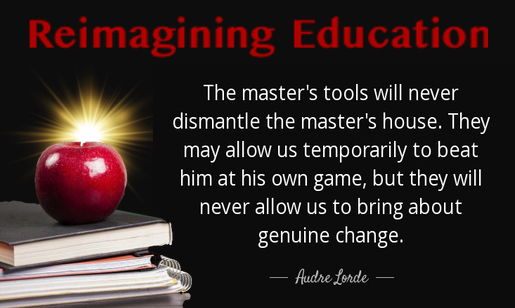 |
The disruption of COVID-19 has shaken the American educational system to its foundations. There will not be a return to what was.As district leaders and educators have been force to "at least" rethink education delivery, there is the opportunity to re-imagine education itself. We (Concerned Conscious Educators) have an opportunity to create an education system that: (1) values the human being; (2) is committed to the development of the human being; and (3) engages the full potential of the human being.Download the [PDF] |
Traditional education did not have to face this problem; it could systematically dodge this responsibility. The school environment of desks, blackboards, a small schoolyard, was supposed to suffice. There was no demand that the teacher should become intimately acquainted with the conditions of the local community, physical, historical, economic, occupational etc., in order to utilize them as educational resources. A system of education based upon the necessary connection of education with experience must, on the contrary ... there is no defect in traditional education greater than its failure to secure the active cooperation of the pupil in construction of the purposes involved in his studying. - John Dewy (1938)
The purpose of education, finally, is to create in a person the ability to look at the world for himself, to make his own decisions, to say to himself this is black or this is white, to decide for himself whether there is a God in heaven or not. To ask questions of the universe, and then learn to live with those questions, is the way he achieves his own identity... I began by saying that one of the paradoxes of education was that precisely at the point when you begin to develop a conscience, you must find yourself at war with your society. It is your responsibility to change society if you think of yourself as an educated person. And on the basis of the evidence – the moral and political evidence – one is compelled to say that this is a backward society. Now if I were a teacher in this school, or any Negro school, and I was dealing with Negro children, who were in my care only a few hours of every day and would then return to their homes and to the streets, children who have an apprehension of their future which with every hour grows grimmer and darker, I would try to teach them - I would try to make them know – that those streets, those houses, those dangers, those agonies by which they are surrounded, are criminal. I would try to make each child know that these things are the result of a criminal conspiracy to destroy him. I would teach him that if he intends to get to be a man, he must at once decide that his is stronger than this conspiracy and they he must never make his peace with it. - Jame Baldwin (1963)
I have never encountered any children in any group who are not geniuses. There is no mystery on how to teach them. The first thing you do is treat them like human beings and the second thing you do is love them. - Asa Hilliard III [click here to get the worksheet]
(1) Develop/Adopt an equity protocol to systematically evaluate policy and practice. Making an equity statement is "nice" and a necessary first step. However, a protocol facilitates translating a value statement into a meaningful outcome.
For example, Portland Public Schools’ Racial Equity and Social Justice Lens; the following questions are a guide and will be considered when making decisions and contemplating our strategies:
Other examples:
Reopening Guidance: Moving Toward More Equitable Schools Recommendations
___________________________________________________________________________________________________________________
(2) Adoption of the Transformative SEL Framework (a process whereby young people and adults build strong, respectful and lasting relationships that facilitate co-learning to critically examine root causes of inequity, and developing collaborative solutions to personal, community and societal problems) as the foundation for learning and engaging students, parents, educators, and community.
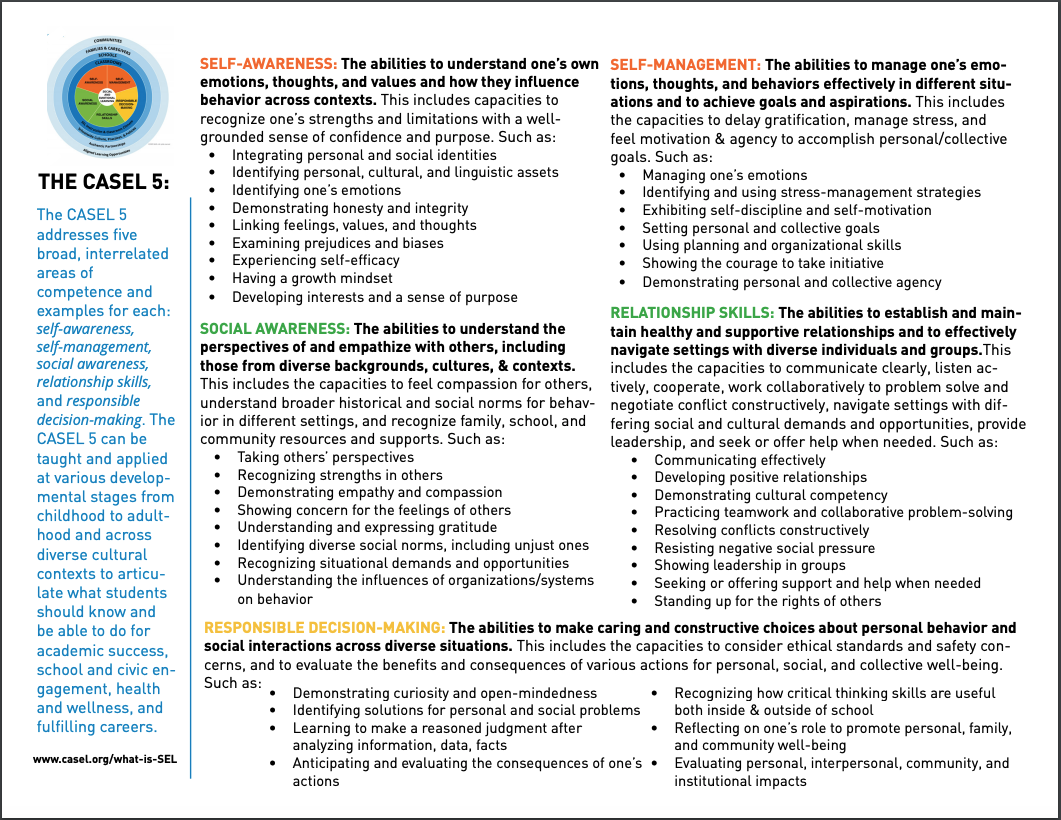
Summary Brief - Toward Transformative Social and Emotional Learning: Using an Equity Lens
SEL As a Lever for Equity - 5-Part Webinar Series
___________________________________________________
- Recommendations from The Aspen Institute National Commission on Social, Emotional, and Academic Development
___________________________________________________
Key Elements to Social Emotional Learning:
- Understanding the Core SEL Competencies
- Culturally Responsive Teaching
- Constructing an Authentic (Counter) Narrative
_____________________________________________________________________________________________________________________
(3) Commit to becoming an anti-racist institution. While acknowledging racism is essential and adopting a position to not be racist is a necessary prerequisite, the aspirational goal of a school district must be to become an anti-racist institution. That is, to deliberately seek to dismantle racist structures, challenge racist ideologies, and repair harm and restore the trust damaged by the policies and history of perpetuating racist structures and ideologies.
There's only 3: racist (bad), non-racist (not-helping*), #AntiRacist (part of the solution).
— Phil Strickland (@MrPhilStrick) June 18, 2020
✊🏾 #HowWeFight #ItsTimeForYouToStandUp #Ukulwa #IWillNotBeAByStander #BlackLivesMatter #systemicracism #hasanminhaj… https://t.co/vohGcyIfO4
*[not making things worst, but not helping to correct what has already gone wrong]
How to Be an Antiracist Educator
Addressing Race and Trauma in the Classroom – A Resource for Educators
Cleveland Foundation Anti-racist Resources
Jane Elliott
asked the simplest of questions ... Why?
10 Documentaries To Watch About Race Instead Of Asking A Person Of Colour To Explain Things For You
Reni Eddo-Lodge "Don't ask the person who was not invited to the party, why they weren't invited. Ask the person who sent the invitations."
Anti-racism resources for white people - This document is intended to serve as a resource to white people and parents to deepen our anti-racism work.
CASEL Resources Links on Antiracist Strategies
Anti-Racism Resources for All Ages - A Project by the Augusta Baker Chair | Dr. Nicole A. Cooke
 |
A curated list of tweets on anti-racism. Antiracist - Curated tweets by DrGoggins2 |
TED Talks playlist to help you understand racism in America
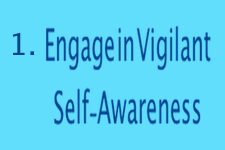 Self-Awareness
Self-Awareness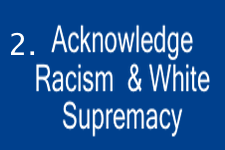 Acknowledge the existence of racism & ideology of white supremacy
Acknowledge the existence of racism & ideology of white supremacy
The Lies We Tell Ourselves About Race - https://www.npr.org/2021/01/10/955392813/the-lies-we-tell-ourselves-about-race
The impact of dehumanization of black folk on white folk
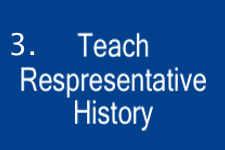 Teach representative history
Teach representative historyAfrocentric.Info - Africana Cultural Resources
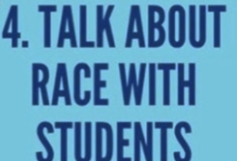 Talk about race with students
Talk about race with studentsFrom PBS
Pre-Kindergarten
Learning with Littles: Developing Cultural Awareness - We invite you to a live discussion with illustrator, animator, writer, director and producer, Joe Murray, who created the new PBSKids hit, Let’s Go Luna. You’ll recognize Joe’s previous work as creator of Rocko’s Modern Life and Camp Lazlo. Together with on-staff anthropologist Erik Messal and cultural advisors from more than a dozen countries, Joe has developed a fun, sweet, irreverent way for even our littlest learners to travel the world and develop global awareness. Designed by educators, the Learning with Littles professional learning series for Pre K-2 educators provides ideas for how to responsibly integrate media into your learning environment. In addition to meeting Joe and other members of the Let’s Go Luna team, you’ll meet other educators, who will share teaching models and strategies to help you build a culturally responsive learning environment. Led by PBS Digital Innovator All Stars Elisabeth Bostwick and Mallory Mbalia, this session highlights exciting resources and models that can immediately be implemented in the classroom. Learn more.
Grades K-2
Arthur: All About Community - Use these Arthur activities to help children understand themselves and those around them. Topics include self-esteem, understanding others, and cultural diversity. Of particular interest may be the episode titled Arthur Takes a Stand. Arthur thinks Mrs. MacGrady is being treated unfairly, so seeks guidance from Congressman John Lewis. Learn more.
Grades 3-5
Culturally Responsive Teaching with Molly of Denali - Join us in the second episode of our virtual professional learning series, “Teaching with Molly of Denali” as we explore some of the very important social and emotional learnings that are woven into the show, especially those that teach the values of diversity and inclusion. In the show, Molly investigates all the interesting and important ways her culture is part of who she is, and she shares her cultural values and awareness with her friends and community. In this virtual professional learning episode, educators will have the opportunity to meet Molly of Denali creative producer Princess Johnson, who will lead us through a discussion about how educators can honor their students, embrace differences and appreciate similarities in a systematic way, that goes beyond simply offering food samples from around the world or engaging in read alouds. The episode, hosted by PBS Digital Innovator All-Stars Elisabeth Bostwick, Heather Gauck, Paige Somoza and Larissa Wright-Elson, will explore best ways to integrate the values of cultural acceptance and curiosity in the classroom, and help both educators and students embrace all learners, celebrate what makes us different, and delight in values and traditions we share. Learn more.
Grades 6-8
The Lowdown: Police, Race and Unrest in America’s Cities - While the Summer of Love swept through San Francisco 50 years ago this summer, scores of inner-city neighborhoods across the country burned with rage. In the summer of 1967, more than 100 poor, largely black communities were rocked by violent incidents, erupting primarily in East Coast and Midwestern cities. In the immediate wake of the riots, President Johnson established a bipartisan task force: the National Advisory Commission on Civil Disorders, known as the Kerner Commission. The 426-page report, published in March 1968, sold over two million copies. Decades later, after the Michael Brown shooting in 2014 and the unrest that followed, a new commission was formed to study a similar issue. Chaired by Jimmy Carter and George W. Bush, the group was tasked with identifying the underlying causes of the unrest. Its final report, while much smaller in scope, bears some resemblance to the Kerner findings. In light of the current national debate about police violence in communities of color, students will evaluate the findings of the 1967 and 2014 commissions. Learn more.
Grades 9-12
Confronting Anti-Black Racism - Use these materials with middle and high school students to help them understand the long history of anti-Black racism in the United States, and think about ways to address it in their own families and communities. Resources include news coverage of recent protests, videos on the origins of the Black Lives Matter movement and protests against police brutality within the past decade, iconic PBS documentaries on the histories of race and racism in America, and activities addressing civic engagement and elevating students’ voices. Learn more.
Resources for Teaching About Current Events in the Classroom Explainers from Facing History and Ourselves.
Racism & Racial Identity from Zinn Education Project.
16 ways to help children become thoughtful, informed, and BRAVE about race. By EmbraceRace
How To Talk To Kids About Black Lives And Police Violence
Free Resources for Supporting Antiracist Education from BrainPOP
 Speak Up and Speak Out!
Speak Up and Speak Out!The School That Tried To End Racism: New Documentary Looks At Classrooms’ Role In Ending Bias https://www.forbes.com/sites/bonniechiu/2020/06/25/can-schools-help-end-racism
https://www.channel4.com/programmes/the-school-that-tried-to-end-racism
https://www.hulu.com/series/the-school-that-tried-to-end-racism-ba5b4e83-eafb-4666-8e09-960041b46308
Download the [Three Guidelines PDF]